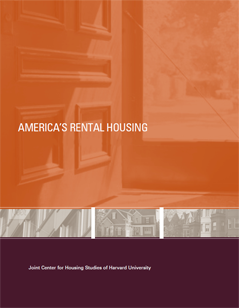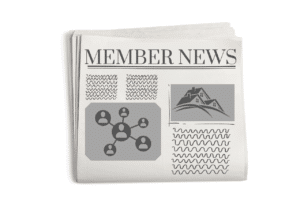
On December 9, 2013, the Joint Center for Housing Studies of Harvard University (JCHS) released a new report on U.S. renters and rental housing characteristics, conditions, and trends during an event at the Newseum in Washington, D.C.
The report, America’s Rental Housing: Evolving Markets and Trends, describes how the 2008 recession has impacted rental housing trends. Currently, there are 43 million rental households, representing 35% of Americans — the highest rate in more than a decade. Additionally, a disproportionate amount of lower-income families and individuals living in rental housing pay an excessive share of their income towards rent. Because of the vast changes in housing, many consider America to be experiencing the worst crisis today in renter affordability.
The December 9 event featured a number of esteemed speakers who responded to the report and suggested ways to create additional decent, affordable housing. These included HUD Secretary Shaun Donovan, Counselor to the Treasury Secretary for Housing Finance Michael Stegman, U.S. Sen. Mark Warner (D-Va.), and Colorado Gov. John Hickenlooper.
Secretary Donovan said America is in the worst crisis for renter affordability, and suggested that there needs to be greater emphasis on housing affordability. He recommending a focus on:
- Preserving Existing Housing
- Donovan said it is important to preserve the existing housing stock to guarantee the continued availability of affordable units for the long term. Funding programs in preservation, including HUD’s Rental Assistance Demonstration (RAD), can serve hundreds of thousands of people by creating higher quality affordable housing despite the deep budget cuts of recent years.
- Building More Affordable Units
- Funding to build additional new affordable units may be limited, but Donovan stressed the importance of stakeholders advocating for these limited sources and taking advantage of all sources of funding, such as the FHA LIHTC Pilot Program.
- Linking the Housing Crisis to Neighborhood and Regional Development as a Platform of Opportunity
- Donovan cited the importance of neighborhood development, noting it is difficult for residents of lower-income areas to move up the ladder of opportunity. Initiatives like the Promise Zone Communities demonstrate how housing linked with improvements in education, transportation, sustainability, and health can help combat inequalities in America.
Donovan encouraged everyone to advocate for the housing community and to reach out to public leaders including Members of Congress on budget issues, tax reform, and housing finance reform.
Other topics discussed in the America’s Rental Housing report include:
- The Resurgence in Rental Housing
- There are 43% million renter households, representing 35% of all households.
- The Diverse Types of Renters
- Rates for renting is at the highest for all age groups.
- With baby boomers aging, the number of renters over 65 will increase by 2.2 million in the next 10 years.
- Rates for renting is at the highest for all age groups.
- The Range of Housing Choice
- 61% of rental housing stock is multi-family in builidings of 2-4 multi-family units to more than 10 multifamily units
- Cost Burdens of Renting
- More than half of renters, about 21.1 million households, were cost burdened in 2012 and paid more than 30% of income towards housing.
- Current Trends and Benefits of Renting
- The report analyzes demographics, age, wealth, and location of American renters.
- Profiles of Current Housing Stock
- The report analyzes current housing stock in the U.S. by location, structure, and cost.
- Profiles of the Current Rental Market Conditions
- The report analyzes current rental market price, construction, and lending.
Additionally, two supplement reports were released:
- The Changing Landscape for Multifamily Landscape
- Reducing Energy Costs in Rental Housing


